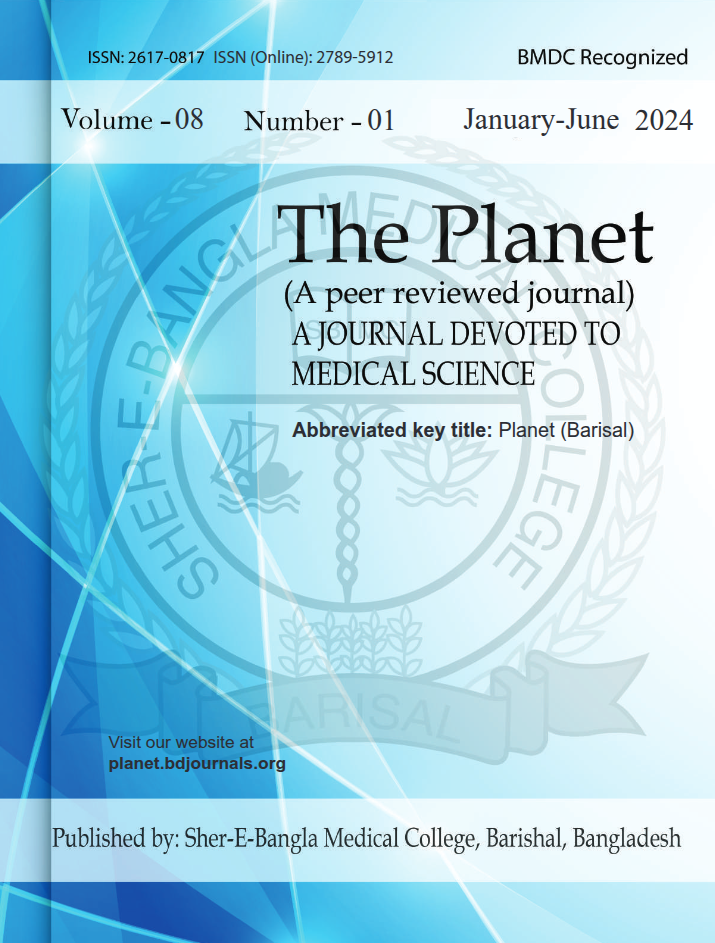Correlation between Clinical Diagnoses and Histopathological Findings of Intestinal Tuberculosis
Published 07-07-2025
Keywords
- Intestinal Tuberculosis,
- Intestinal Obstruction,
- Abdominal Pain,
- Macroscopic Nodules
Copyright (c) 2025 The Planet

This work is licensed under a Creative Commons Attribution 4.0 International License.
How to Cite
Abstract
Background: Intestinal tuberculosis remains a significant clinical challenge, particularly in regions where tuberculosis is endemic. It often presents with nonspecific symptoms and variable clinical signs, making early diagnosis difficult. Methods & Materials: This cross-sectional type of observational study was conducted in the Department of Surgery, Uttara Adhunik Medical College & Dhaka Medical College Hospital, Dhaka, from January 2015 to December 2015. A total of 30 patients were selected as study subjects by purposive sampling method. Statistical analyses were carried out by using the Statistical Package for Social Sciences version 20.0 for Windows. Result: The most common clinical presentation was chronic intestinal obstruction (60%), with abdominal pain (83.3%) and weight loss (76.7%) being the predominant symptoms. Pallor (86.7%) and abdominal distension (63.3%) were the most frequent physical signs. Laparotomy revealed multiple macroscopic nodules (70%) and enlarged mesenteric lymph nodes (53.3%) as the leading intraoperative findings, supporting the chronic inflammatory or granulomatous nature of the underlying pathology. Conclusion: Chronic intestinal obstruction was the most common pre-operative diagnosis and abdominal pain, weight loss, fever, malaise anorexia and constipation were mainly common presenting symptoms. Pallor, distended abdomen, abdominal tenderness and palpable mass in the abdomen were more frequent in the studied patients. Multiple macroscopic nodules, enlarged mesenteric lymph nodes and hyperplastic lesions were the numerous findings in laparotomy.



